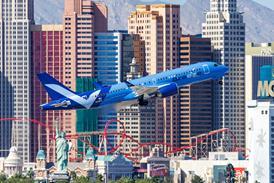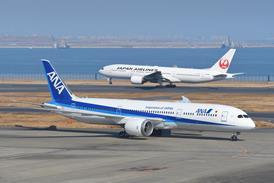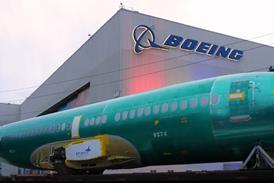JUSTIN WASTNAGE / BARCELONA
Six general aviation aircraft to be fitted with transponders to verify update rates
Europe's first operational trial of an automatic dependent surveillance-broadcast (ADS-B) communications navigation and surveillance/air traffic management (CNS/ATM) system is to start next month at an airport in northern Sweden.
Six general aviation aircraft based at Kiruna airfield have been fitted with ADS-B transponders, and airport authorities are awaiting final approval from the Swedish civil aviation authority to go live. Aircraft currently use ground navigational aids on approach to non-radar equipped Kiruna and the aim of the trial is to provide radar-like position reports using ADS-B.
The trial is part of the second phase of the North European ADS-B Network Update Programme (NUP II), which involves around 30 airports and offshore oil installations. NUP II will validate the operational use of ADS-B, which provides position, status and trajectory data to air traffic control (ATC).
NUP phase I, which will finish at year-end, defined common standards and technical specifications for the system. Further trials as part of NUP II will go live early next year, says NUP II programme manager Harald Malén. The NUP II trials focus on those ADS-B applications suitable for early implementation in Europe, he adds.
The ADS-B trials have been funded by the European Commission (EC) following a successful demonstration by a Swedish-led team in 1999 (Flight International, 17-23 February 1999). Christopher North, head of air transport research at the EC says that ADS-B will be the most sustainable CNS-ATM system in Europe as air transport grows. "Mode-S, favoured by the USA, is only a short-term solution in Europe because of frequency congestion," he says. The EC is also keen to promote VHF datalink mode 4 (VDL-4), which ADS-B systems use to transmit information between users.
The Kiruna trial will verify the update rates of all the equipment, prior to certification. ADS-B has a range of around 300km (160nm) and data will be displayed on standard ATC screens at the airport. To validate the system for airborne aircraft, data from a radar at Luleå airfield, 150km to the south east, will be relayed to Kiruna via landline, where it will be integrated on displays with the ADS-B data.
Eventually, aircraft operated by regional airline Skyways will be used to validate operation on scheduled services between Kiruna and Stockholm Arlanda Airport.
Meanwhile, the EC is set to approve funding of a southern European ADS-B trial, the Mediterranean Free Flight programme, which will include fitting Iberia Airbus A320 family aircraft on the Madrid-Barcelona shuttle with transponders to track aircraft movements.
Source: Flight International























